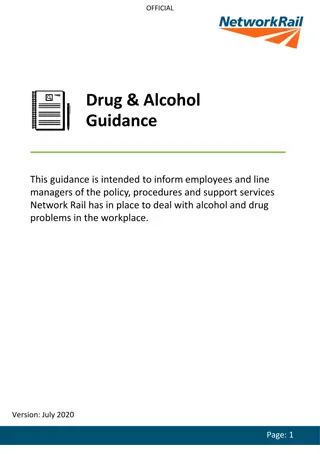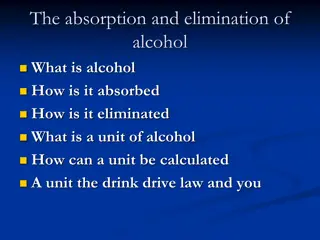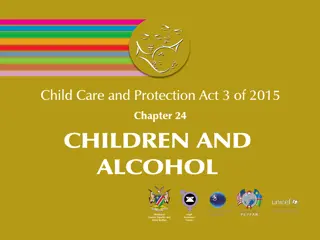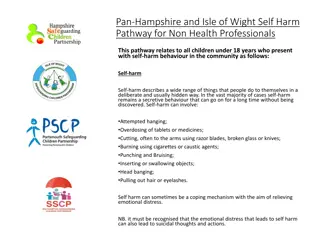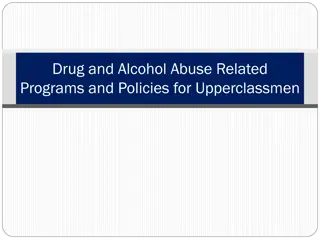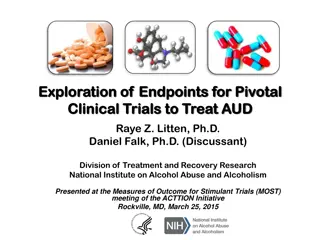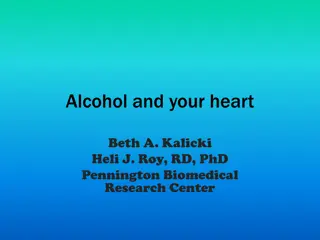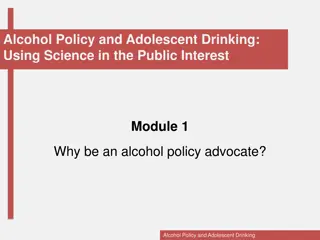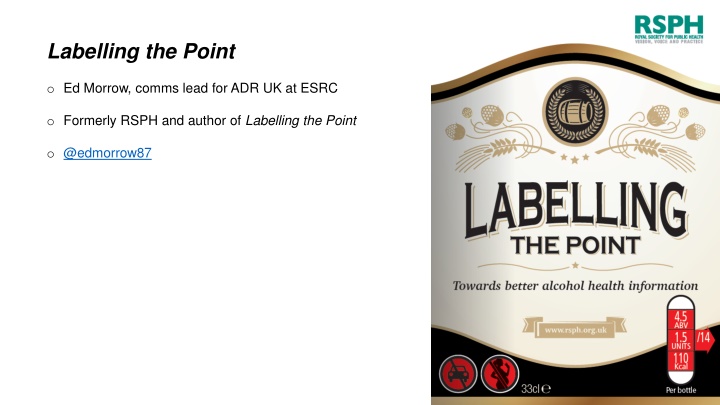
Insights on Alcohol Labeling and Consumer Behavior
Discover key findings on alcohol labeling impact and consumer behavior from a study conducted with focus groups and a UK-wide survey. Learn about low awareness of health information on labels, the importance of ABV in decision-making, and the potential influence of calorie labeling. Find out how explicit health warnings and clear presentation of key information can drive behavior change among drinkers.
Download Presentation

Please find below an Image/Link to download the presentation.
The content on the website is provided AS IS for your information and personal use only. It may not be sold, licensed, or shared on other websites without obtaining consent from the author. If you encounter any issues during the download, it is possible that the publisher has removed the file from their server.
You are allowed to download the files provided on this website for personal or commercial use, subject to the condition that they are used lawfully. All files are the property of their respective owners.
The content on the website is provided AS IS for your information and personal use only. It may not be sold, licensed, or shared on other websites without obtaining consent from the author.
E N D
Presentation Transcript
Labelling the Point o Ed Morrow, comms lead for ADR UK at ESRC o Formerly RSPH and author of Labelling the Point o @edmorrow87
Methodology Four focus groups, carried out by BritainThinks in September 2016: o Group 1: London, male, age 25-50, NRS social grades A/B/C1 o Group 2: London, female, age 25-50, NRS social grades C2/D o Group 3: Manchester, male, age 25-50, NRS social grades C2/D o Group 4: Manchester, female, age 25-50, NRS social grades A/B/C1 UK-wide representative survey of 1,783 adults who drink alcohol, carried out by Populus in February 2017
Potential impact of calorie labelling
Key take outs Awareness and use of current health information on alcohol labels is low. ABV is the primary driver of purchasing and drinking decisions, with alcohol units insufficiently understood to facilitate their practical use they are effectively useless without clear linkage to CMO guidelines. Presenting health information on the front of labels is critical to maximising exposure, so elements with the greatest potential to influence behaviour must be identified and presented here. However, presenting too much information leads to counterproductive information overload, so we must prioritise. The addition of calorie information to the front label of alcohol containers could lead to a modest but worthwhile in-category shift towards lower calorie (and therefore typically lower alcohol) products, across all drink types and socio-economic grades, with an especially pronounced effect among young and female drinkers. Explicit health warning elements, including drink drive and pregnancy logos, and those warning of specific health conditions such as cancer, are particularly prioritised by young drinkers and less affluent socio-economic groups. Providing references to online information on labels has been demonstrated to be an ineffective measure with little popular demand, which is likely to engage only a small minority of consumers.




